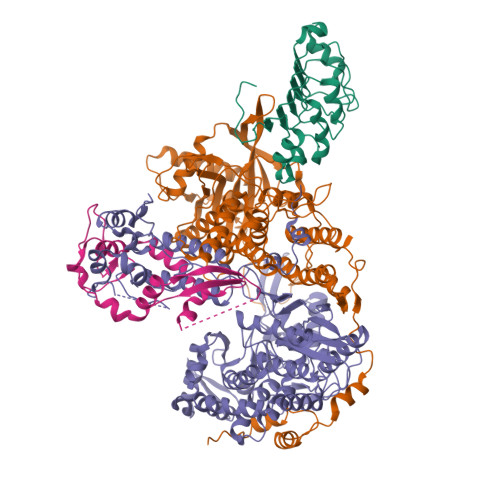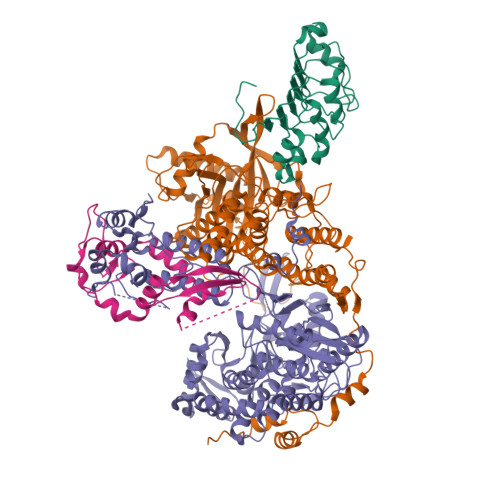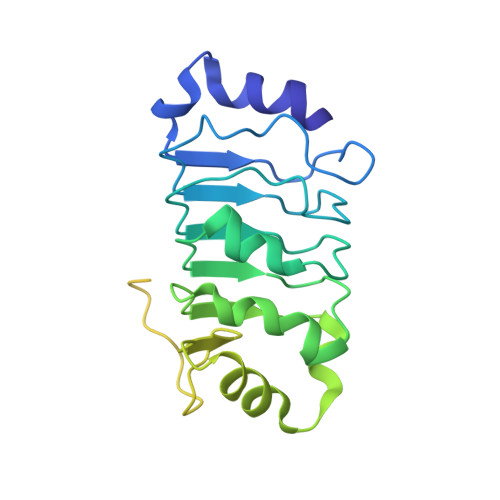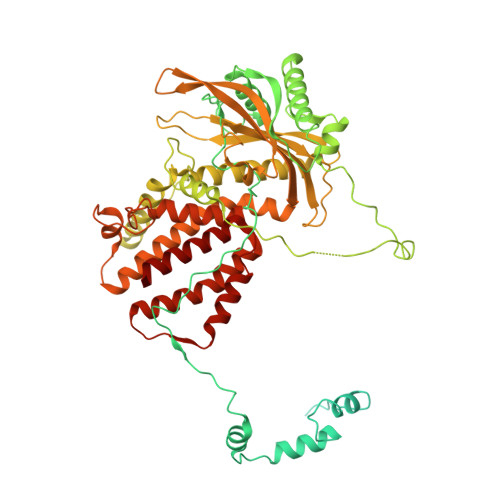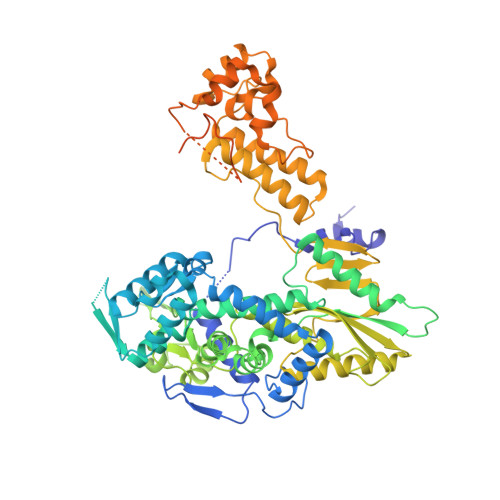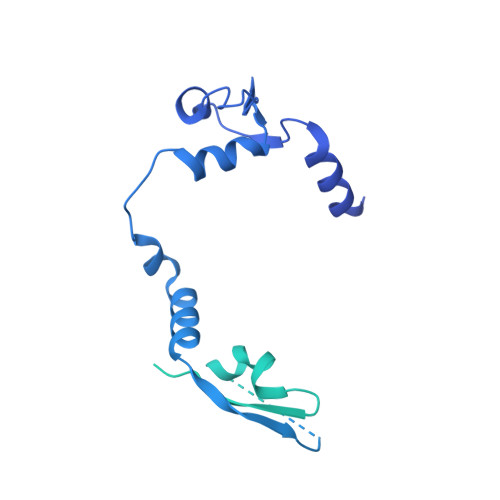Structures of H5N1 influenza polymerase with ANP32B reveal mechanisms of genome replication and host adaptation.
Staller, E., Carrique, L., Swann, O.C., Fan, H., Keown, J.R., Sheppard, C.M., Barclay, W.S., Grimes, J.M., Fodor, E.(2024) Nat Commun 15: 4123-4123
- PubMed: 38750014
- DOI: https://doi.org/10.1038/s41467-024-48470-3
- Primary Citation of Related Structures:
8R1J, 8R1L - PubMed Abstract:
Avian influenza A viruses (IAVs) pose a public health threat, as they are capable of triggering pandemics by crossing species barriers. Replication of avian IAVs in mammalian cells is hindered by species-specific variation in acidic nuclear phosphoprotein 32 (ANP32) proteins, which are essential for viral RNA genome replication. Adaptive mutations enable the IAV RNA polymerase (FluPolA) to surmount this barrier. Here, we present cryo-electron microscopy structures of monomeric and dimeric avian H5N1 FluPolA with human ANP32B. ANP32B interacts with the PA subunit of FluPolA in the monomeric form, at the site used for its docking onto the C-terminal domain of host RNA polymerase II during viral transcription. ANP32B acts as a chaperone, guiding FluPolA towards a ribonucleoprotein-associated FluPolA to form an asymmetric dimer-the replication platform for the viral genome. These findings offer insights into the molecular mechanisms governing IAV genome replication, while enhancing our understanding of the molecular processes underpinning mammalian adaptations in avian-origin FluPolA.
Organizational Affiliation:
Sir William Dunn School of Pathology, University of Oxford, Oxford, UK.








